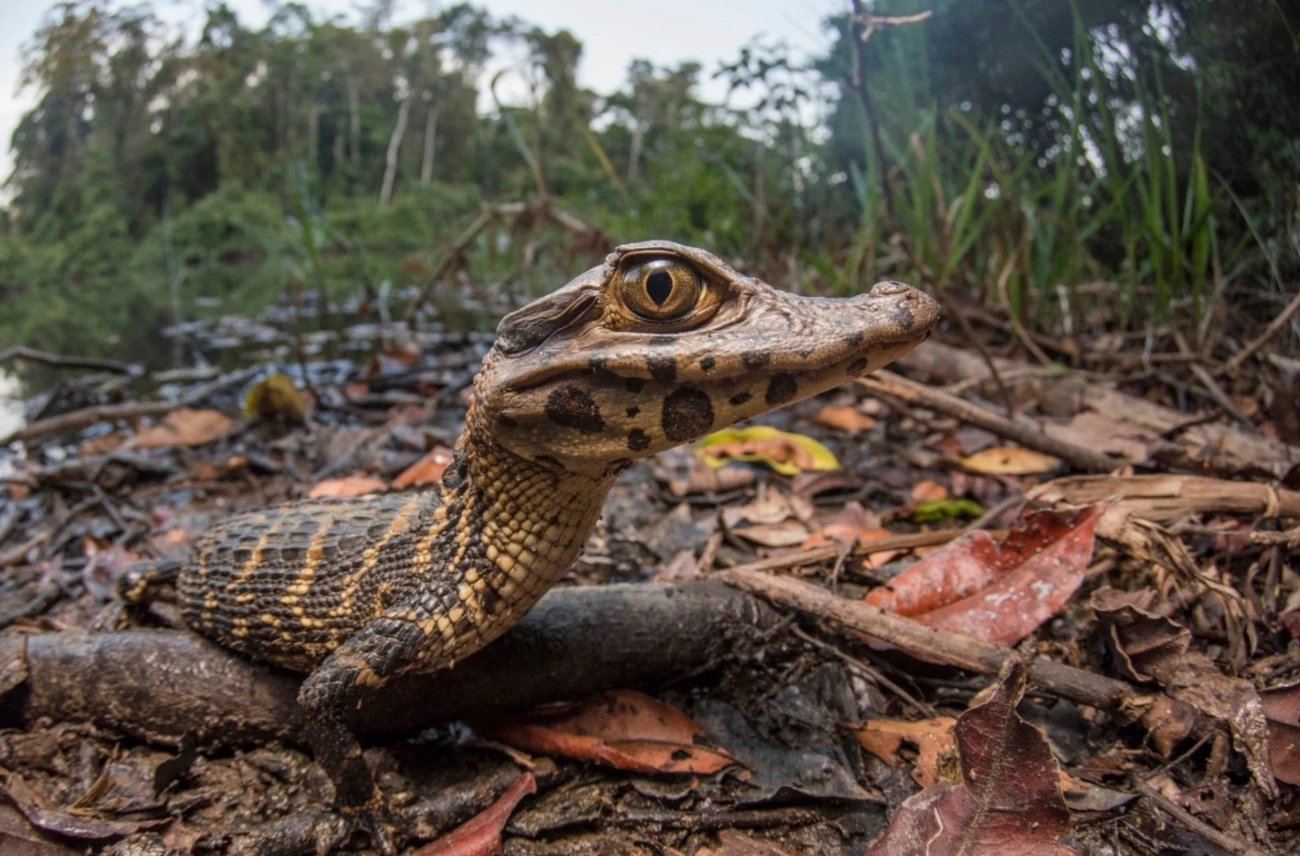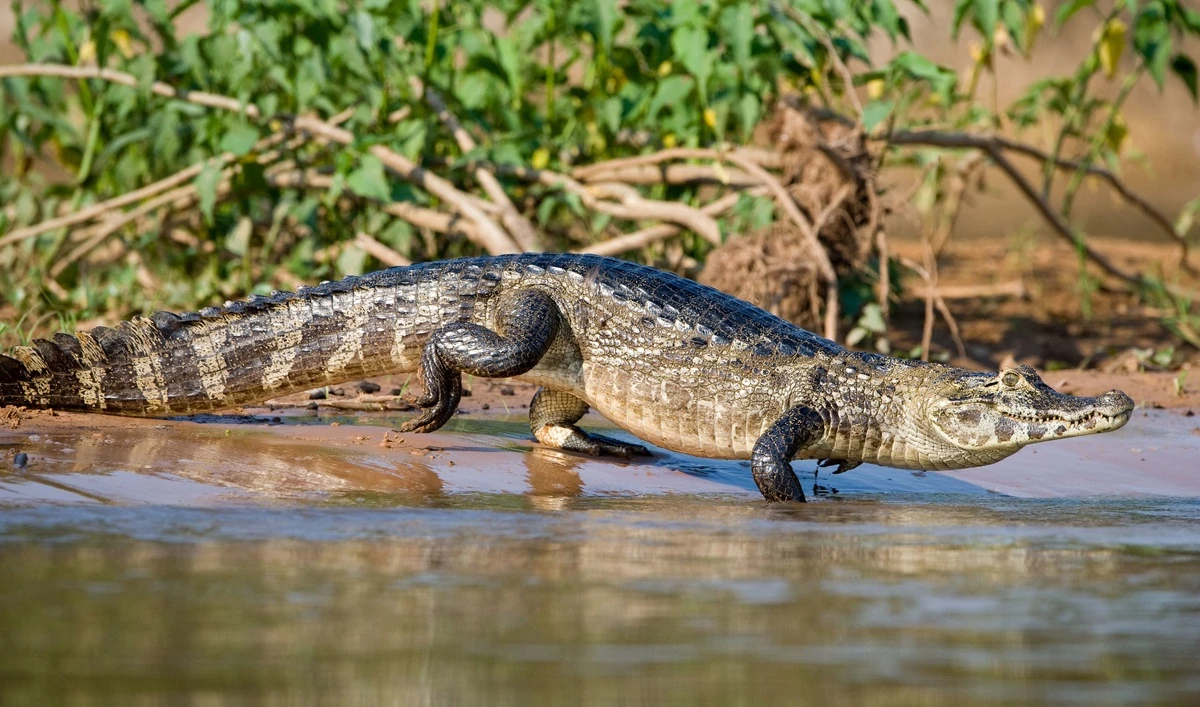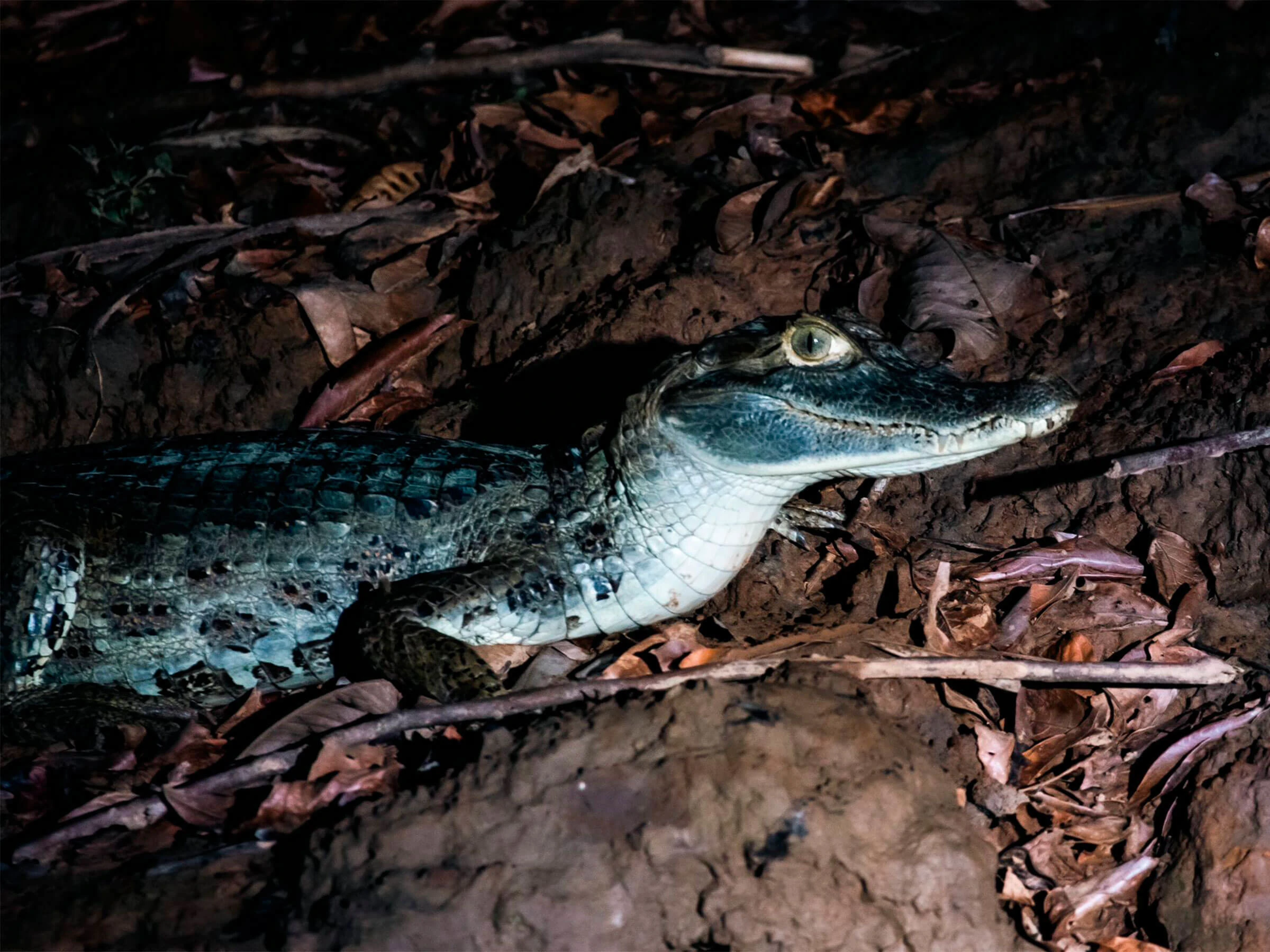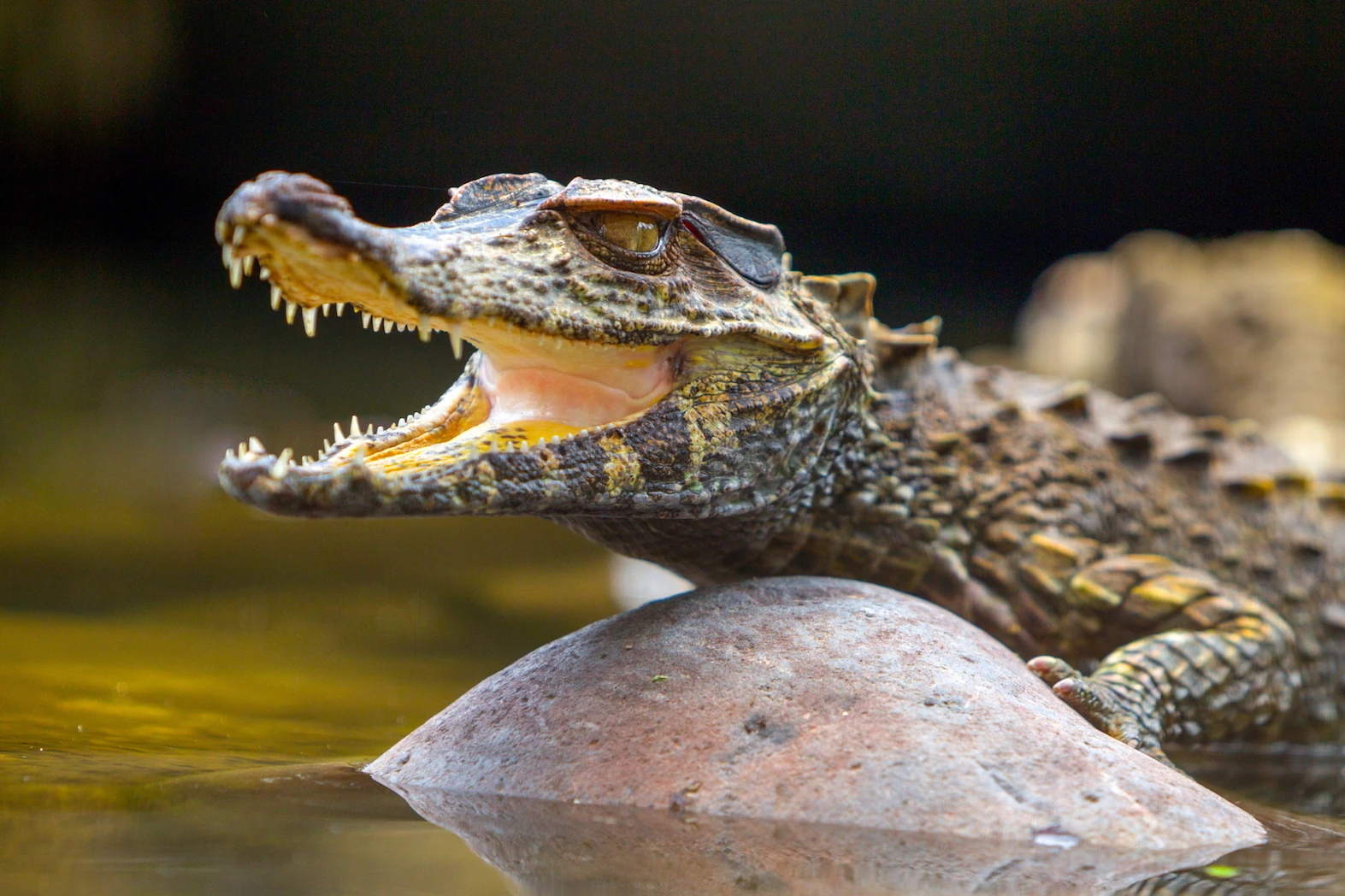Imagine gliding through the mystical waterways of the Peruvian Amazon, surrounded by the symphony of nature. Among the vibrant flora and fauna, the Amazon caimans reign as formidable predators. These fascinating creatures play a pivotal role in maintaining the delicate balance of this lush ecosystem.
Their presence is a testament to the intricate web of life that thrives in one of the world’s most biodiverse regions. Understanding the caimans’ role in this ecosystem not only enhances our appreciation for the Amazon but also highlights the importance of preserving this natural wonder.
Understanding Caimans

Caimans are a part of the Alligatoridae family, closely related to alligators and crocodiles. However, these reptiles are unique in their own right, offering a fascinating glimpse into the diversity of the crocodilian lineage. What sets caimans apart from their relatives, and how have they adapted to thrive in the Amazon’s challenging environments?
At first glance, caimans and crocodiles might appear similar, but a closer look reveals distinct differences. Caimans tend to be smaller than crocodiles, with the largest species, the black caiman, reaching up to 16 feet. Their snouts are generally shorter and broader, adapted to their diet and habitat. This adaptation allows them to catch a variety of prey, including fish, amphibians, and small mammals, effectively making them versatile hunters in their environment.
Caiman vs. Crocodile: Key Differences
Crocodiles, on the other hand, have a V-shaped snout and can grow much larger, with some species reaching over 20 feet. These differences are essential for identifying these reptiles in the wild, especially for travelers navigating the Amazon rivers. Additionally, crocodiles generally prefer saltwater or brackish habitats, which further distinguishes their ecological niches from those of caimans. This separation in habitat preference helps reduce direct competition between the two groups, allowing each to thrive in its own territory.
The Amazon is home to several caiman species, each contributing uniquely to the ecosystem. The spectacled caiman is the most common, named for the bony ridge between its eyes. This ridge gives them a distinctive appearance, resembling a pair of spectacles, and aids in protection and camouflage. The black caiman is the largest and most feared due to its size and power. Its dark coloration provides excellent camouflage in the murky waters, making it an efficient ambush predator.
Meanwhile, the dwarf caiman is the smallest, rarely exceeding 5 feet, and is known for its agility in the water. Despite its size, the dwarf caiman plays a crucial role in the ecosystem by preying on smaller animals and maintaining the balance of aquatic life. Each species of caiman occupies a specific niche, contributing to the overall health and diversity of the Amazon’s aquatic ecosystems. Their presence indicates a healthy river system, rich in biodiversity and ecological interactions.
The Role of Caimans in the Ecosystem

Caimans have evolved numerous adaptations that enable them to thrive in the Amazon’s challenging environment. Their tough, armored skin protects them from predators and environmental hazards. This armor is composed of bony scutes, providing both physical protection and aiding in thermoregulation. Their powerful jaws and sharp teeth make them formidable predators, capable of capturing and subduing a wide range of prey.
In addition to physical adaptations, caimans have developed behavioral strategies that enhance their survival. They are primarily nocturnal hunters, taking advantage of the cover of darkness to ambush unsuspecting prey. This nocturnal behavior reduces competition with diurnal predators and minimizes the risk of detection by potential threats. Their ability to regulate their body temperature through basking and submersion further enhances their adaptability to the fluctuating temperatures of the Amazon.
Caimans are apex predators, crucial for the health of the Amazon’s waterways. They control the population of prey species, such as fish and amphibians, preventing overpopulation and maintaining biodiversity. This predatory role ensures the balance of the food web, allowing for a diverse array of species to coexist in the same habitat.
Giant Otters: A Unique Relationship
Caimans share their habitat with a plethora of other fascinating creatures. Giant otters, known for their playful nature, are one of the few animals that will occasionally challenge a caiman, especially when defending their young. These interactions, although rare, highlight the complex social dynamics and territorial behaviors present in the Amazon’s aquatic ecosystems.
Pink Dolphins: The Mystical River Dwellers
The pink dolphins, or boto, add to the Amazon’s mystical allure. While they don’t directly interact with caimans, their presence is a testament to the rich biodiversity of the river ecosystem. Their playful antics and social behaviors provide an intriguing contrast to the more solitary and stealthy nature of caimans. The coexistence of these diverse species underscores the intricate balance of life in the Amazon, where each organism plays a vital role in maintaining the ecosystem’s health.
Anacondas: Competition and Predation
Anaconda, the world’s largest snake, are both competitors and predators of caimans. These serpents are capable of overpowering smaller caimans, adding a dramatic dynamic to the river’s predatory hierarchy. The interactions between caimans and anacondas are a testament to the fierce competition for resources in the Amazon, where size and strength often determine survival.
This balance between caimans and anacondas exemplifies the intricate web of life in the Amazon. Their interactions are not just about survival; they also play a crucial role in shaping the structure and dynamics of the ecosystem. This predator-prey relationship is a vivid example of nature’s checks and balances, where each species influences the other’s population and behavior. The ongoing battle between these two formidable predators is a captivating spectacle, showcasing the raw power and adaptability of Amazonian wildlife.
Caiman Roles

Caimans play a vital role in maintaining the health and stability of aquatic ecosystems in the Amazon. By preying on fish and other aquatic organisms, they help regulate populations and prevent any single species from dominating the ecosystem. This regulation ensures a balanced and diverse aquatic community, supporting a wide range of species and ecological interactions.
Moreover, caimans contribute to nutrient cycling within the ecosystem. Their waste products provide essential nutrients that enrich the water and sediment, supporting the growth of aquatic plants and microorganisms. This nutrient enrichment, in turn, sustains the food web, benefiting both aquatic and terrestrial organisms. Caimans’ role in nutrient cycling highlights their importance in maintaining the productivity and resilience of the Amazon’s aquatic ecosystems.
For those eager to witness caimans in their natural habitat, the Peruvian Amazon offers unparalleled opportunities. The region’s diverse landscapes and rich biodiversity make it a prime destination for wildlife enthusiasts and nature lovers.
Amazon: Key Locations
Manu National Park is a UNESCO World Heritage site and one of the most biodiverse areas on the planet. Here, you can embark on guided tours that take you deep into the rainforest, where caimans lurk silently in the murky waters. These tours offer a chance to explore the park’s vast array of ecosystems, from lowland rainforests to cloud forests, each teeming with unique wildlife.
Visitors to Manu can experience the thrill of spotting caimans along the park’s rivers and oxbow lakes. These waterways provide ideal habitats for caimans, offering ample food and shelter. In addition to caimans, Manu is home to a staggering variety of species, including jaguars, one of the big cats of the Amazon, macaws, and countless amphibians and reptiles. The park’s rich biodiversity and pristine landscapes make it a must-visit destination for anyone interested in the natural world.
Tambopata National Reserve
Tambopata National Reserve is another prime location for spotting caimans. Nighttime excursions offer a unique chance to see these nocturnal hunters in action, their eyes glowing eerily in the torchlight. These tours provide an immersive experience, allowing visitors to witness the mysteries of the Amazon after dark.
The reserve’s diverse habitats, from lush rainforests to expansive wetlands, support a wide range of wildlife. In addition to caimans, visitors to Tambopata can encounter species such as capybaras, giant river otters, and a variety of bird species. The reserve’s commitment to conservation and sustainable tourism ensures that these natural wonders are protected for future generations, offering a model for preserving the Amazon’s unique wildlife ecosystems.
Discovering Puerto Maldonado
Puerto Maldonado serves as the gateway to many Amazon adventures. From here, travelers can embark on river cruises or stay in eco-lodges that offer caiman-spotting tours, providing a comfortable yet immersive experience. These lodges often feature knowledgeable guides who can share insights into the region’s ecology and wildlife.
River Cruises and Eco-Lodges for Caiman Tours
River cruises offer a relaxing way to explore the Amazon’s vast network of waterways, providing opportunities to observe caimans and other wildlife encounters. Many tours include visits to native communities, offering a glimpse into the traditional ways of life that have coexisted with the Amazon’s natural wonders for centuries. Puerto Maldonado’s strategic location makes it an ideal starting point for exploring the rich biodiversity and cultural heritage of the Amazon.
Caiman tours typically involve nighttime river excursions. Guides use flashlights to spot the reflective eyes of caimans lurking in the water. It’s an exhilarating experience that offers a glimpse into the secretive nocturnal world of these reptiles. Participants should be prepared for the darkness and quiet of the Amazon night, which adds to the thrill and mystery of the encounter.
During these tours, guides often share fascinating insights into the behavior and ecology of caimans, enhancing the educational aspect of the experience. It’s an opportunity to learn about the role of caimans in the ecosystem and the importance of conserving their habitats. Tours usually last a few hours, providing ample time to observe caimans and other nocturnal wildlife, such as bats and night birds.
Responsible Wildlife Tourism in the Amazon

While caimans are fascinating to observe, it’s crucial to maintain a respectful distance. Always follow the guidance of your tour leader, as they are experienced in navigating the unpredictable Amazon environment. Safety precautions are essential to ensure the well-being of both visitors and wildlife.
Guides will instruct participants on how to behave around caimans, emphasizing the importance of minimizing noise and sudden movements. It’s also important to wear appropriate clothing and footwear to protect against insects and the elements. Respecting the natural habitat and following safety guidelines ensures a safe and enjoyable experience for everyone involved.
For photographers, capturing caimans requires patience and a steady hand. Use a long lens to maintain distance, and take advantage of natural light during daytime jungle tours for stunning shots of these elusive creatures. Photographers should be prepared to work in challenging conditions, as the low light and dense vegetation of the Amazon can make photography difficult.
Engaging with Local Communities and Ecologies
Experimenting with different angles and perspectives can yield unique and captivating images. Patience is key, as wildlife photography often involves waiting for the perfect moment to capture a caiman in action. By respecting the animals and their habitat, photographers can create impactful images that showcase the beauty and mystery of the Amazon.
As we explore the Amazon, it’s vital to remember our role in preserving this incredible ecosystem. Responsible tourism helps protect wildlife and supports local communities, ensuring that future generations can experience the wonder of the Amazon. Amazon Conservation efforts and sustainable practices are essential to safeguarding the region’s unique biodiversity.
The Urgency of Preserving the Amazon
Caimans, with their ancient lineage and crucial ecological role, are just one piece of the Amazon’s complex puzzle. By understanding and appreciating these predators, we gain deeper insight into the interconnectedness of life in the rainforest. Our actions today can have a profound impact on the future health of the Amazon and its inhabitants.
Whether you’re a busy executive seeking a unique adventure, a photographer in search of dramatic wildlife encounters, or a researcher delving into the mysteries of the natural world, the Amazon offers a wealth of experiences and knowledge. Embark on your journey with curiosity and respect, and the Amazon will reward you with memories that last a lifetime. The preservation of this extraordinary ecosystem depends on our commitment to protecting its wonders and fostering a deeper connection with the natural world.




